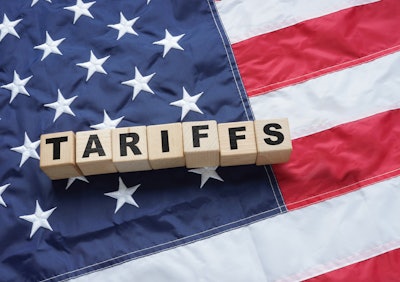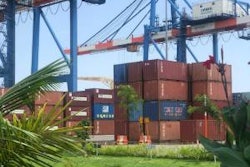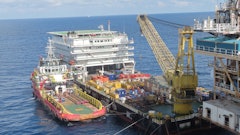
A new study by The Kaplan Group found that several specific industries have a high-risk score. This score considers both the industry’s structural trade vulnerabilities and its exposure to specific countries.
“With potential rising tariffs amplifying industry risk scores, companies must be vigilant, especially as higher tariff exposure can lead to increased payment defaults and longer receivables cycles in an already complex B2B environment,” says ,” says Dean Kaplan, president of The Kaplan Group. “Industries with high tariff exposure scores above 30 are more likely to experience severe payment delays or defaults if tariffs increase. This makes early warning systems and proactive credit management essential.”
Key takeaways:
- The textile impregnation industry exhibits a high risk with 58.25% exposure to Canada.
- China’s influence is concentrated in the energy sector, controlling 56.01% of the mineral fuels trade.
- Only a small fraction (approximately 2.8%) of the total trade value falls within the high-risk (score > 30) bracket.
- The top exporting industries are high-productivity sectors like energy (mineral fuels and oils), textiles and copper products. These sectors have strong export activity, contributing to the nation’s trade surplus. The top importing industries tend to have high domestic consumption and complex supply chains, making them more dependent on international markets.
- Geographically, China is the main export destination for these sectors, while for imports, Mexico is the leading source.
- The textile-impregnated industry has the highest combined risk score of 37.57, driven by an exceptionally high exposure to key countries (99%).
- When looking at broader sector categories, energy and minerals have the highest average risk score of 26.26, managing $9.26 billion in trade value. The metals sector follows with a risk score of 24.92 and a substantially larger trade value of $41.24 billion. Textiles maintains a comparable risk level at 24.89 but operates with a much smaller trade footprint of $1.59 billion.
- Of the total $328.97 billion in trade value, only $9.24 billion (2.8%) falls within the high-risk category (score > 30).
“The real concern isn’t just the direct impact of tariffs; it’s the domino effect through the supply chain. When key industries show high-risk scores like we’re seeing, it could translate to a significant increase in payment delays or defaults across their entire supplier network,” Kaplan says.


















